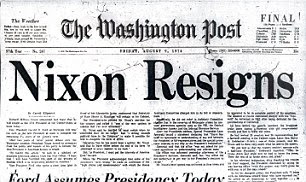Living with intention: That’s my project these days, and as a writer, this means writing with intention. Furthermore, as a writer who aspires to reach and impact as many readers as I can, I’m working to keep the writing constantly at the fore of the things I care about.
Today is a good example. I have a habit of making things-to-do lists during church, the part of the week where I am most deliberate about embracing hope and possibility. It means I’m not listening closely about half the time, but that’s OK, too—the brain acts like a sieve, and the important parts catch, and that’s when I listen closely.
Today’s list of tasks is quite a long one, and I don’t see anything on it that can wait until tomorrow. I have two grant applications that need to be completed by the morning. Some teaching and grading work is overdue—work that risks inconveniencing students, who are already overloaded. There are freelance editing tasks to finish and jobs to apply for, both sooner rather than later, and on top of all of this, I’d like to love my kids and clean my house—and I wouldn’t mind watching the Oscars.
But the thing I’m attacking first is this blogpost, and there is a reason for that—one that I’ve written about in the past. Writing is my driving force in life, and when I put writing first, everything falls into place.
Until recently, intention has been … well, intentional for me. It has been a project that I have worked hard to accommodate. I’ve had to deliberately order the items on my list and make sure writing was at the top (sometimes with a little arrow to boost it from where it occurred to me to include it). I’ve also had to make a literal space for writing to happen—a desk, a table, a corner of the couch.
Here, in the universe, I’ve arranged both space and time to accommodate my writing, to allow myself to receive inspiration like a visitor. I’ve made doing this a habit, and inspiration does visit daily, exactly like a familiar friend. Whatever else is going on, I chisel a gap and I step into it and writing is there, ready.
While I was noodling in church, a song played, and few words of its lyrics were caught in my sieve. It was a tune that was familiar from my childhood Baptist days—the kind of hymn we almost never sing in my Unity congregation—and it said something about silently calling.
When I was eight and Baptist—a religion that was already a terrible fit, and not just for me, but for my mom, who merely dropped me off at that church and picked me up after—the lyrics were different, and it was called “Open My Eyes That I May See.” I like the tunes of these old hymns, although the “wretch like me” talk is a little galling (I’m no wretch, and you aren’t, either). Likewise, the constant construction of God as male (Father, He, etc.) seems silly. Still, something about these hymns transports me.
Today we were singing the words “Silently now you call to me,” and I forget the rest of the lyrics, but I’m sure they had to do with our private ability to connect with our universal source (a very Unity-like concept). This sounds so much like my experience with writing, though—no matter how busy I am, I experience this “silent call,” although I find that wording a little ridiculous. It’s more like a pull—a source of gravity, a private planet.
The pull gets stronger the more I honor it, and I can get swept up in it. I lose time to it; I fall away from my physical self.
And that’s why I put it first. There is so much to do! And yet I may as well try to avoid the gravity that holds me to the planet as avoid the need to write.
This is the result of intentionality, which is only beginning to pay off. I’m eager to see where it takes me.









